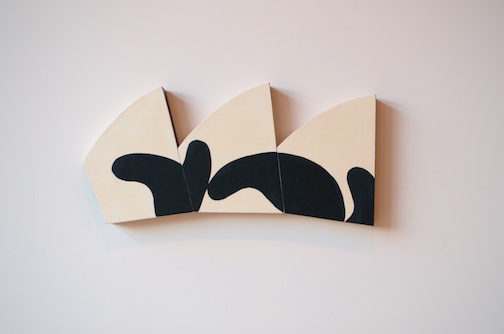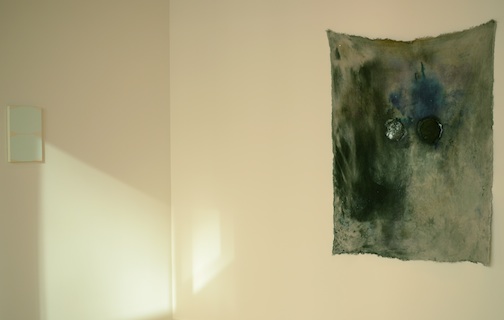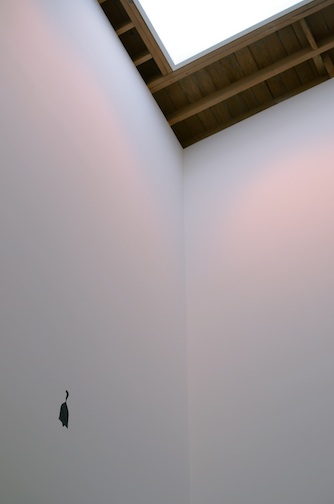
|
||
|
Portland art blog + news + exhibition reviews + galleries + contemporary northwest art
|
||
Interior Margins: A Question of Language
There are just three short days left to see the exhibition Interior Margins at the Lumber Room. Granted, this is not much time to observe and ponder the abstract experiments of the artists exhibiting therein, but to miss the questions posed by this eloquent exhibition entirely would be quite a loss. As one of the newer exhibition spaces to Portland, the Lumber Room is a fantastic addition, enriched by a live-in residency program that is on display as part of the gallery. The direction of the reader's attention to the artists' body is a reason to give pause. How exactly do they "enact the female body?" What "swelling forms" exist within this exhibition? Perhaps Judy Cooke's graphic black shapes could be seen as "swelling," but this is a stretch. The language is almost strange, irrelevant sounding. If this was a group of male abstractionists, no such reference to the artists' bodies would have been made at all. It is almost as if the celebration of the rarity of female artists working in an abstract vernacular gives allowance to highlight the physicality of being female. The impetus for these abstractionists does not visibly have to do with being female. This is not an exhibition concerned with gender identity. These artists are dealing with ideas of material and language, existential philosophies, and meanings of process- as so many artists who make abstract work do. The fact that these artists are female is an exciting reason as any to have a show; it is simply that the show's statement seems to deflate the intellectual aspect of this experience somewhat and replace it with the body. It is misleading. The interesting aspect of the female part of it is to see the continuation and variety of the tradition of women making abstract objects and images and to gather them together to see what is happening now. This is the essence of Interior Margins. What is feminine about the show is indefinable, perhaps because femininity itself is indefinable. Yet then again, so is personhood. There is an eloquence to the show, an essence of tactility, and an utter lack of violence. There is a thoughtful measure and a graceful formal consideration that is clear and well designed. Interior Margins will be up on display until the January 30. Posted by Amy Bernstein on January 25, 2012 at 7:31 | Comments (0) Comments Post a comment Thanks for signing in, . Now you can comment. (sign out)
(If you haven't left a comment here before, you may need to be approved by
the site owner before your comment will appear. Until then, it won't appear
on the entry. Thanks for waiting.)
|
| s p o n s o r s |
 |
 |
 |
 |
 |
 |
 |
 |
 |
 |
 |
 |
 |
 |
 |
 |

|
Site Design: Jennifer Armbrust | • | Site Development: Philippe Blanc & Katherine Bovee | |




